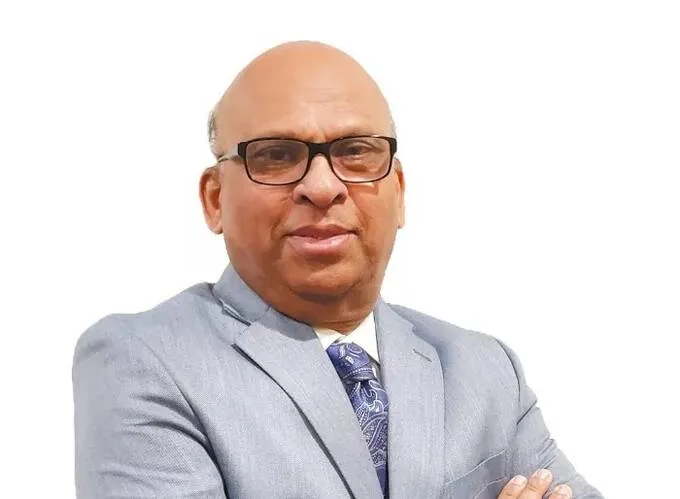

There are certain pages in the annals of Kerala history which are sure to hold many a candle to our own shame and scorch our pride with self-loathing, pages that talk about inhuman customs, untouchability and slavery. Those who misinterpreted the chaturvarnya concept and were proud of casteism had never understood the Advaita Siddhanta of India or the Upanishadic views and truths. Swami Vivekananda looked at Kerala and called it a madhouse at a time when Kerala was a hotbed of casteism. It was that epithet that later became the cause of Kerala's renaissance and reformation.
The Vaikom Satyagraha is the most important of the great agitations that fuelled the revival processes of Kerala. On March 30, 2023, the centenary of this legendary strike will be celebrated, but the stark relevance of the issues put forward by the strike should not be forgotten or side-lined. The Vaikom Satyagraha is also a victory of the Hindu community waking up and organizing itself against those who were smearing casteist thoughts on Hindu Dharma.
The Satyagraha began when the government refused to open the Vaikom temple paths to all people. TK Madhavan a multi-talented social reformer, revolutionary and journalist, who had made the teachings of Sree Narayanaguru his view of life, met Mahatma Gandhi in Tirunelveli in 1921 and this meeting truly triggered the Vaikom Satyagraha.
When Gandhiji asked the Congress Party to take up the struggle, the movement took a political turn. Gandhi himself visited Vaikom. As KP Kesava Menon, T.K. Madhavan, A.K. Pillai, Velayudha Menon, Krishnaswamy Iyer, and K Kelappan broke the taboo and entered the temple road, all progressive thinkers joined in the communal cleansing process and reformation.
Sree Narayanaguru blessed the struggle and fuelled it with his inspiration. The Guru's exhortation that "those who think that the touch of others will make them impure should no longer be allowed to remain in purity" excited the agitators. Moreover, Guru gave over the Vellur Math near Vaikam to the Satyagrahis. Guru sent his disciples Swami Sathyavrata and Kotukoikal Velayudhan to help the Satyagrahis. He made a personal contribution of Rs.1000 towards the Satyagraha expenses and established a treasury at Sivagiri for the Satyagraha Fund. Guru, who took a special interest in Satyagraha with the aim of social purification did it as a silent revolution against the caste system in Kerala. If visionaries like Guru had not taken such an approach, the conversion of the downtrodden Hindus into other religions would have gained momentum in caste-ridden Kerala.
Mannath Padmanabhan, whose vision was the upliftment of all communities, participated in the Vaikom Satyagraha and led the marches as it was a remarkable event in the history of the Kerala Renaissance. Phenomenal changes happened when Mannath Padmanabhan, who advocated and worked hard for the eradication of such customs like untouchability became a part of the Vaikom Satyagraha movement. After the Nair-Ezhava conference held at Vaikam on the advice of Gandhiji, the march led by Mannath Padmanabhan from Vaikam to Thiruvananthapuram created enthusiasm in favour of the Vaikam Satyagraha throughout Travancore. The procession that started from Vaikam reached Sivagiri and took the blessings of Sree Narayanaguru and by the time it reached Thiruvananthapuram, it had turned into a huge crowd. Mannath Padmanabhan’s procession concluded with the submission of a petition signed by 20,000 people to Rani Sethulakshmi Bai. With this march, the conservatives, who were creating segregation between the upper and lower castes, had begun to hear the waking bells of brighter days.
The Vaikom Satyagraha gained international attention as it received support and participation from other parts of India. As the Young India Editor Abdul Rahman, Barrister George Joseph, Arya Samaj's Swami Shradhananda, Vinobhabeve, Periyar E.V. Ramaswamy Naikkar, foreign press editors, great personalities and intellectuals from different corners of the world declared their support, the administration and the conservatives were forced to listen to the demands of the agitators.
E.V. Ramaswamy Naikkar participated in the Vaikom Satyagraha and was arrested and imprisoned. Even in prison, he went on to inspire those who were in the struggle. He enlisted his own wife and followers as members of the struggling army. E.V. Ramaswamy Naikkar's contributions to the Vaikom Satyagraha are immeasurable.
After 603 days of struggle from March 30, 1924, to November 23, 1925, when the Vaikom temple path was made accessible to all, regardless of caste, a virtual new path of togetherness and coexistence was opened in Kerala which had been notorious for its casteism.
The Vaikom Satyagraha laid the foundation for the social atmosphere to adopt Advaita Darshan and Sanatana values envisioned by Gandhiji, Sri Narayanaguru, Mannath Padmanabhan and TK Madhavan. We still must carry forward the same values put forward by the Vaikom Satyagraha in our work towards establishing a non-communal world without distinction of caste, religion, or class.

(Writer is Chairman of World Hindu Parliament and former President of Fokana)